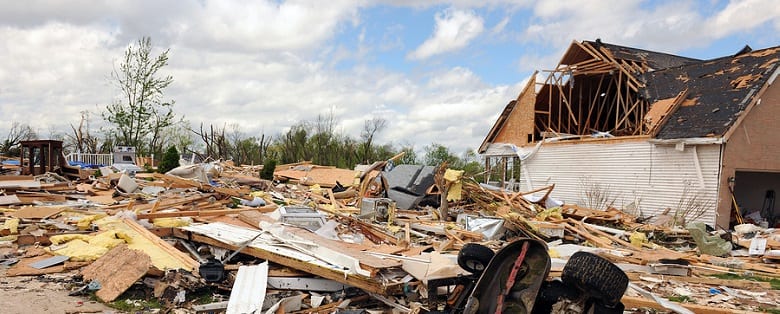
Mother nature can be brutal, especially to roofs. Because natural disasters do happen, and the roof can be one of the most vulnerable areas, it is essential that buildings in areas prone to bad weather be built to withstand these potential disasters. Local building codes dictate the standards that roofers must adhere to for various types of roofs, and how a roof company must install them, in order for a building to be in compliance. Based on different design and durability features, the right roof, that is installed by an experienced roof company, is a commercial building owner’s best security for making it through unpredictable, severe weather events.
Avoiding Roof Blow Offs
Roofs are not indestructible, but doing everything possible to avoid a blow off is the best way to prepare a building for the possibility of natural disasters, like damaging hurricanes or tornadoes. Although not every roof can be saved, following or going above and beyond building code standards, can help ensure a roof at least has a fighting chance. In terms of roofing material and design, the thicker and stronger the better; however, roof attachment, and the ways that wind and water are kept out are equally as important. Therefore, roofing and roof design, in terms of disaster proofing, should be based upon the roofing material, and how it is attached.
Making the Roof Strong Enough
Each type of commercial roofing requires something different in terms of storm preparedness, and avoiding the disasters that can come with natural disasters. Following are some of the ways roofing companies should prepare various types of roofs for weathering damaging storms:
- Modified Bitumen and Built Up Roofs - The weakest point with these type of roofs is frequently the underlayment. To avoid conditions that allow these built up surfaces to be peeled off by strong winds it is necessary to use durable, tear-resistant underlayment, or membrane layers that are thoroughly affixed to the roof. Asphalt gravel coating on BUR roofing also adds durability against extreme weather.
- Membrane Roofs - The most important consideration in preventing wind damage to membrane roofs is the tear and break strength of the membrane, and how well the edges of the roof are sealed with an appropriate roofing edge system. In areas where extreme weather is possible, roofers should use thicker, more resistant membranes that are more tear resistant, and more durable against weakening UV damage.
- Metal Roofs - Metal roofs must meet local windstorm ratings, and must be very carefully affixed and sealed against wind and water to prevent storm damage. Thicker panels can be more protective against hail damage and penetrations; but the critical protection against wind and water, is heavy enough decking that is attached appropriately, and a strong enough roof edging system.
The ability to withstand severe storms and natural disasters is one of the main challenges all roofs must face. Roof design and composition, as well as an installation that is done in accordance with local building codes, are both important factors in keeping the roof on a building, versus losing it to a storm. When planning commercial buildings, installing new roofs, or simply wanting to ensure that existing roofs can stand up to the test, the right roofer can also make a big difference. Always work with an experienced roof company who can provide the most durable roof installation, and can withstand the rigors of Mother Nature!
Need A Roofing Company In College Station TX?
Done Right Roofing Provides Reliable Service!
Call 979-710-7839!
Additional Articles:
How to Protect Your Roof From A Hurricane's Strong Winds!
Roof Warning Signs - What Do They Mean?
Noisy Roofs - Find the Problem and Fix It!
